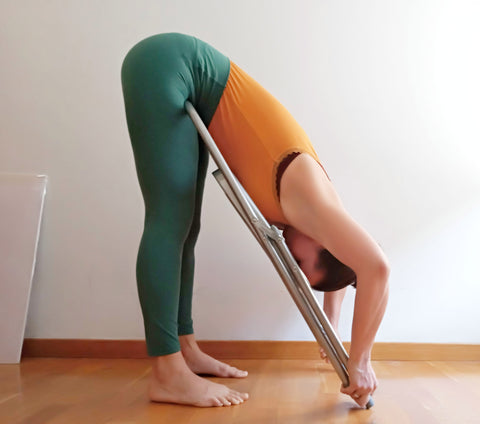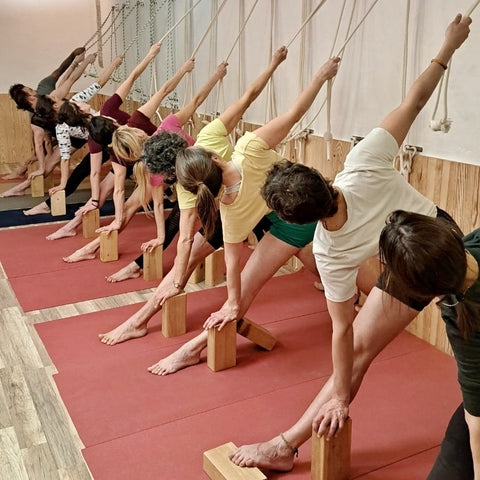Iyengar Yoga, renowned for its precision and emphasis on alignment, incorporates a unique element into its practice—the use of yoga props. These props serve as invaluable tools in providing practitioners with the necessary extension, direction, opening, and alignment to deepen their yoga experience. However, it's crucial to understand that these props are not meant for passive support but should be utilized with strength, understanding, and the intention to gradually empower the body to take over independently.
-
Yoga props for extension:

Yoga props in Iyengar are ingeniously employed to extend the reach of practitioners. Whether it's using a yoga block to lengthen the arms in a standing pose or a bolster to elongate the spine in a seated posture, these props offer the means to explore new dimensions in one's practice. The focus is on creating space within the body, allowing for greater flexibility and improved posture.
-
Yoga props for direction:

Direction is a key element in Iyengar Yoga, and props play a crucial role in guiding the body into precise alignment. For instance, a yoga chair can be strategically used to provide support and guide the body into the correct positioning for various asanas. This directional assistance not only ensures proper form but also aids in the development of muscle memory for sustained alignment.
-
Yoga props for opening:

Opening the body through the use of yoga props is a transformative aspect of Iyengar Yoga. Props like straps, blocks, and bolsters facilitate controlled stretching, helping practitioners safely explore and expand their range of motion. This controlled opening is essential for gradually releasing tension, improving flexibility, and cultivating a deeper connection with the body.
-
Yoga Props for alignment:

Iyengar Yoga is synonymous with precise alignment, and yoga props act as reliable companions in achieving this goal. By providing support where needed, props enable practitioners to align their bodies with precision, fostering a harmonious balance between strength and flexibility. This attention to alignment contributes to the overall well-being of the practitioner and minimizes the risk of injuries.
Using Props with Strength and Understanding:
It's important to note that the use of yoga props in Iyengar Yoga is not a crutch but a stepping stone toward a more refined practice. Props should be approached with strength, intention, and a deep understanding of their purpose. They are tools to aid in the journey, not a permanent dependency. As practitioners gain strength and flexibility, the reliance on props diminishes, allowing the body to gradually take over the responsibilities assumed by the props.
Approach the props with mindfulness, use them purposefully, and witness how they become instrumental in unlocking new dimensions of your practice.
At Ananda Hum, we specialise in yoga props for Iyengar practitionners. Check out our yoga online shop here.




